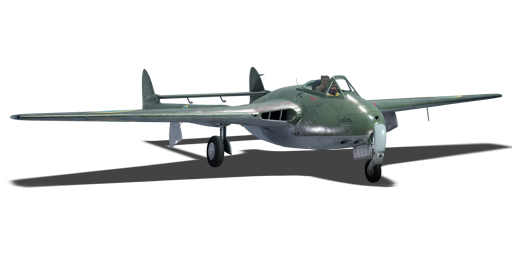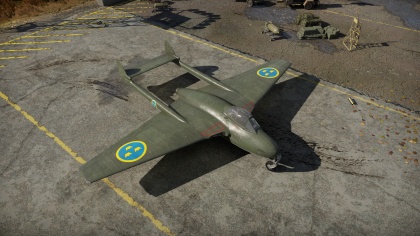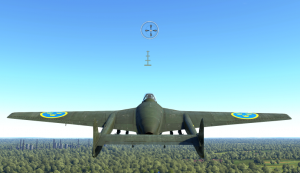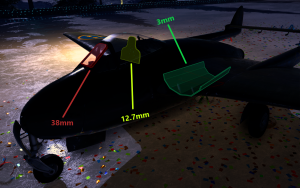Difference between revisions of "A28B"
m (→Details: Updated template to preferred type) |
m (→Pros and cons) (Tag: Visual edit) |
||
| Line 90: | Line 90: | ||
|- | |- | ||
! colspan="3" | Engine characteristics | ! colspan="3" | Engine characteristics | ||
| − | ! colspan="4" | Mass with fuel (no weapons load) || rowspan="2" | Max Takeoff<br/>Weight | + | ! colspan="4" | Mass with fuel (no weapons load) || rowspan="2" | Max Takeoff<br />Weight |
|- | |- | ||
! Weight (each) || colspan="2" | Type | ! Weight (each) || colspan="2" | Type | ||
| Line 107: | Line 107: | ||
| 0.35 || 0.32 || 0.30 || 0.28 || 0.23 | | 0.35 || 0.32 || 0.30 || 0.28 || 0.23 | ||
|- | |- | ||
| − | | ''Optimal'' || 1,290 kgf<br/>(0 km/h) || N/A | + | | ''Optimal'' || 1,290 kgf<br />(0 km/h) || N/A |
| 0.35 || 0.32 || 0.30 || 0.28 || 0.23 | | 0.35 || 0.32 || 0.30 || 0.28 || 0.23 | ||
|- | |- | ||
| Line 195: | Line 195: | ||
* Decent ammo count. | * Decent ammo count. | ||
* Easy to land. | * Easy to land. | ||
| + | * Powerful rockets with 500mm penetration. | ||
'''Cons:''' | '''Cons:''' | ||
Revision as of 15:04, 8 April 2020
Contents
| This page is about the Swedish jet fighter A28B. For other versions, see Vampire FB 5 and Vampire FB 52A. |
Description
The A28B is a rank V Swedish jet fighter
with a battle rating of 7.7 (AB/SB) and 8.0 (RB). It was introduced in Update 1.95 "Northern Wind".
The J28B is an early war jet known as the Vampire FB 5 in the British tech tree. It was ordered in large numbers by the Swedish air force to leap into the jet age. The Vampire family is known for its great dogfighting capabilities, meaning the J28B can comfortably fend off several opponents at once if controlled by a skillful pilot. This aerial performance is given at the cost of engine power.
General info
Flight performance
The J28B performs well at low altitude where it easily outturns most opponents it faces. Thanks to the excellent flaps and air brakes, a pilot aware of his/her energy can fend off anyone that picks a fight. The flaps can be utilised at various speeds to outturn any enemy at any time. Dogfights are where the Vampire platform shines, it is a highly effective fighter with its relatively light airframe and smooth controls. Although the power is lacklustre, a pilot aware of his/her surroundings will have no difficulty avoiding incoming enemies. This lack of engine power will, however, cripple the J28B when it comes to acceleration. A Vampire tends to lose a lot of speed when engaged in turning. So gaining it back to defend itself against new opponents becomes a hassle. And even if a J28B pilot manages to get their speed up, catching a target will be close to impossible with a slow top speed. This lack of power hinders the J28B in many ways, mostly related to energy. This is why "Vamp" pilots are advised to climb at the beginning of a match, despite the lack of a decent climb rate.
The J28B performs identically to the Vampire FB 5 which should not come as a surprise. The firepower is what makes them different, however. The J28B is outfitted with the Swedish Akan m/47B (short for "Automatkanon"), which is the Swedish designation of the British Hispano Mk.V, although the calibre and fire rate are the same, the burst mass is larger. This has to do with the Swedish ammunition. The Swedish ammo type contains more TNT and is fully tracer equipped, meaning stealth isn't an option. Despite this downside, the guns perform closer to the American AN/M3 guns instead of the British Hispanos, making the J28B the most effective Vampire in regards to firepower. The J28B is also outfitted with several types of anti-tank and anti-ship rockets. Despite lacking the large 1,000 lb bombs the FB 5 offers, the rockets offer a much different experience compared to the original model. The rockets fire one at a time held on by a Swedish rocket rack, pointing them further down than usual. The average pilot, especially the ones coming from the FB 5, will find this new placement tricky to get used to. But considering the single fire system, a skilled pilot might be able to rack up more destroyed tanks in ground battles compared to the FB 5. If this becomes too sufferable, however, it is recommended to use "Fire rocket salvo" instead to fire off two rockets at once, for a more traditional feel. It's not worth sacrificing accuracy for efficiency when it comes to rockets.
| Characteristics | Max Speed (km/h at 4,572 m) |
Max altitude (meters) |
Turn time (seconds) |
Rate of climb (meters/second) |
Take-off run (meters) | |||
|---|---|---|---|---|---|---|---|---|
| AB | RB | AB | RB | AB | RB | |||
| Stock | 817 | 792 | 10668 | 25.0 | 25.7 | 16.1 | 15.1 | 650 |
| Upgraded | 895 | 855 | 23.5 | 24.0 | 24.4 | 20.0 | ||
Details
| Features | |||||
|---|---|---|---|---|---|
| Combat flaps | Take-off flaps | Landing flaps | Air brakes | Arrestor gear | Drogue chute |
| ✓ | ✓ | ✓ | ✓ | X | X |
| Limits | ||||||
|---|---|---|---|---|---|---|
| Wings (km/h) | Gear (km/h) | Flaps (km/h) | Max Static G | |||
| Combat | Take-off | Landing | + | - | ||
| 888 | 330 | 520 | 520 | 300 | ~10 | ~5 |
| Optimal velocities (km/h) | |||
|---|---|---|---|
| Ailerons | Rudder | Elevators | Radiator |
| < 550 | < 600 | < 600 | N/A |
Engine performance
| Engine | Aircraft mass | ||||||
|---|---|---|---|---|---|---|---|
| Engine name | Number | Empty mass | Wing loading (full fuel) | ||||
| de Haviland Goblin II | 1 | 3,385 kg | 190 kg/m2 | ||||
| Engine characteristics | Mass with fuel (no weapons load) | Max Takeoff Weight | |||||
| Weight (each) | Type | 11m fuel | 20m fuel | 30m fuel | 39m fuel | ||
| 705 kg | Centrifugal-flow turbojet | 3,734 kg | 4,014 kg | 4,325 kg | 4,605 kg | 5,606 kg | |
| Maximum engine thrust @ 0 m (RB / SB) | Thrust to weight ratio @ 0 m (100%) | ||||||
| Condition | 100% | WEP | 11m fuel | 20m fuel | 30m fuel | 39m fuel | MTOW |
| Stationary | 1,290 kgf | N/A | 0.35 | 0.32 | 0.30 | 0.28 | 0.23 |
| Optimal | 1,290 kgf (0 km/h) |
N/A | 0.35 | 0.32 | 0.30 | 0.28 | 0.23 |
Survivability and armour
- 38 mm Bulletproof glass - Armoured windscreen
- 12.7 mm Steel - Armour plate behind the pilot's head
- 3 mm Steel - Armour plate under the engine
The J28B has the same armour as the Vampire FB 5 as well as the Italian Vampire FB 52A. Despite being dangerous in a head-on due to the beefed-up guns, a J28B should never fully commit to a head-on engagement, the bulletproof glass will, however, save the pilot most of the time. The tail section is not easily saved though. The twin-boom makes it twice as likely to hit the traction of control surfaces. This leaves the J28B completely useless usually resulting in abandonment of the aircraft, which should be avoided at all costs.
Armaments
Offensive armament
The A28B is armed with:
- 4 x 20 mm Akan m/47B cannons, chin-mounted (150 rpg = 600 total)
Suspended armament
The A28B can be outfitted with the following ordnance:
- Without load
- 8 x m/49A rockets
- 8 x m/51 rockets
- 4 x m/49 rockets
Usage in battles
A J28B pilot should always be aware of his/her speed and altitude, or energy in more advanced terms. To avoid enemies with superior engine power using it as a boom and zoom target, a J28B pilot should use altitude to their advantage. Since the Vampire platform is bad at building up energy, the pilot should store as much energy as possible for when the battle begins. Before engaging targets, it can also be useful to always keep a speed of at least 400 km/h to limit the number of options an enemy has to counterattack. This also helps the J28B to swiftly turn around and begin a dogfight if the opponent commits to one. This playstyle can be applied to every Vampire plane in the game since they perform mostly the same. The J28B has to watch out for Ho 229 V3 players, however, since they can outmatch the J28B in turning. A good way to counter the Horten is to make it bleed speed. Forcing it to turn once or twice and then extending away from the enemy.
A playstyle close to that of a propeller-driven aircraft can be applied, where energy is the key to survival. The J28B has quite the firepower compared to the other Vampire models. This can reward players who can safely head-on from a distance and then avoid incoming shots from the enemy. This will usually result in a critical hit or straight-up destruction if the enemy doesn't also avoid. The fired rounds are quite deadly and require less gun-time compared to the British counterpart. This gives the J28B an overall higher chance of surviving since it can afford to spend less time on each target. A pilot comfortable with their aim will easily outsmart opponents and make them think twice before engaging in a future dogfight with a A28B.
Modules
| Tier | Flight performance | Survivability | Weaponry | ||
|---|---|---|---|---|---|
| I | Fuselage repair | Offensive 20 mm | |||
| II | Compressor | Airframe | m/49A | ||
| III | Wings repair | Engine | New 20 mm cannons | m/51 | |
| IV | G-suit | Cover | m/49 | ||
Pros and cons
Pros:
- Great turning and dogfighting capabilities.
- Stronger guns than the British/Italian counterpart.
- Effective air-brakes that generate lift once deployed.
- Decent ammo count.
- Easy to land.
- Powerful rockets with 500mm penetration.
Cons:
- Slow top speed.
- Poor rate of climb.
- Low gun placement forcing pilots to aim higher than usual.
- Weak tail section that often suffers damage from enemy fire.
- Retains energy poorly.
History
The Swedish air force carefully studied what was happening at the Fronts in WWII, and by 1944 it was already obvious that the propeller era was coming to a close. By early 1945, the Swedes had already begun a project to power the Saab J21 with a ramjet. However, it seemed this project would take far too long. By autumn of 1945, the J29 project was also beginning to take shape. But even this project wouldn't take to the skies until 1949, so a foreign design had to do until then.
The British de Havilland Vampire was one of the first jet-powered fighter planes to enter the market, and Sweden was very interested in this design. In early 1946, Sweden ordered 70 Vampire F Mk 1 models designated J28A, thus becoming one of the first customers of the Vampire. This version was mostly used as practice for the new era of jet-driven aircraft. But the Swedes became fond of the design. So when the export version of the Vampire FB 5 entered the market known as the Mk 50, Sweden was very interested and orders started in 1949. This version was to be known as the J28B or A28B depending on suspended armaments. This version differed from the Mk 1 by having a renewed, rounder tail section, and a lower placed elevator. The engine was upgraded from the RM1 to the RM1A that was now produced by SFA (Svenska flygmotor AB) in Sweden and delivered to de Havilland in Britain for installation. The main armament was also changed from the Hispano Mk II to the more potent Hispano Mk V. By 1952, 310 J28B Vampires had been delivered to Sweden. 12 of these would be rebuilt as a two-seat trainer, known as the J28C-3.
Media
Excellent additions to the article would be video guides, screenshots from the game, and photos.
See also
Vampire family
Similar aircraft
External links
- [Wikipedia] De Havilland Vampire
- [aef.se] De Havilland Vampire - Flygvapnets första jetflygplan
- [svfplhist.home.blog] - Fpl 28 - I flygvapnet
| De Havilland Aircraft Company Limited | |
|---|---|
| Fighters | Hornet Mk.I · Hornet Mk.III · Mosquito FB Mk VI · Mosquito FB Mk XVIII |
| Jet fighters | Vampire F.B.5 · Venom FB.4 · Sea Venom FAW 20 · Sea Vixen F.A.W. Mk.2 |
| Export | ␗Mosquito FB.Mk.26 · ▄Vampire FB 52A(Italy) · ▄Vampire FB 52A(Finland) · A28B |
| Sweden jet aircraft | |
|---|---|
| Fighters | J21RA |
| J29A · A29B · J29D · J29F | |
| J32B | |
| J34 | |
| J35A · J35D | |
| JA37C · JA37D · JA37DI · JA37DI F21 | |
| JAS39A · JAS39C | |
| Strike aircraft | A21RB |
| A32A · A32A Röd Adam | |
| A28B | |
| AJ37 · AJS37 | |
| SK60B · SAAB-105G | |
| Export | SAAB-105OE |
| Finland | ▄Vampire FB 52A · ▄MiG-21bis · Saab J35XS |







